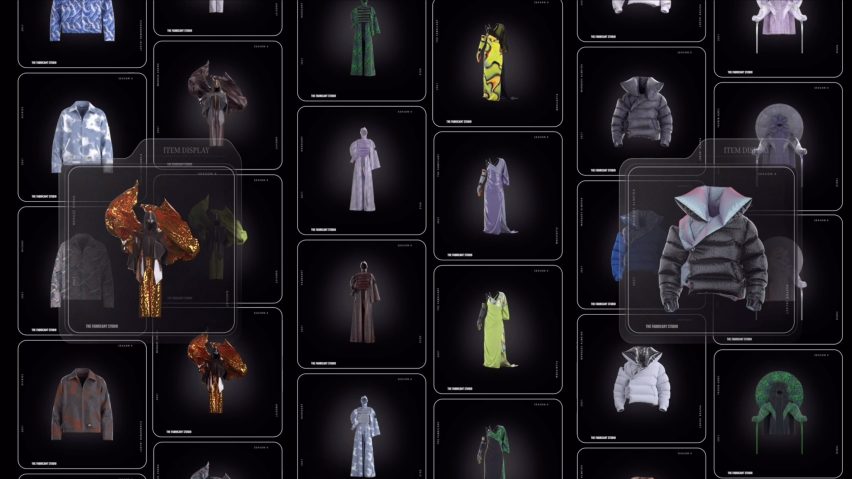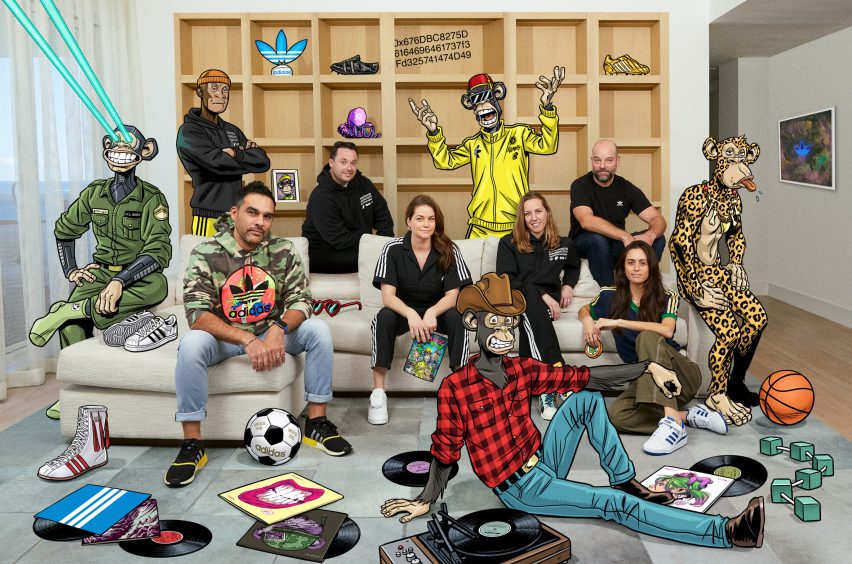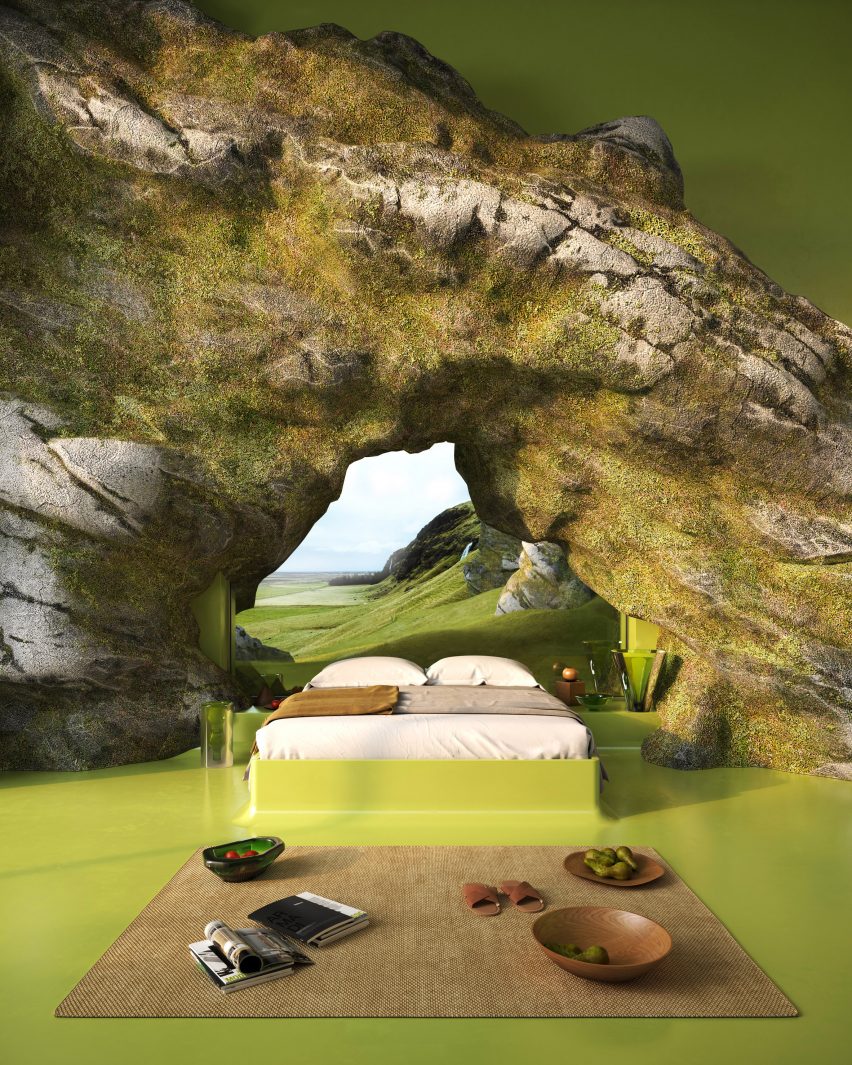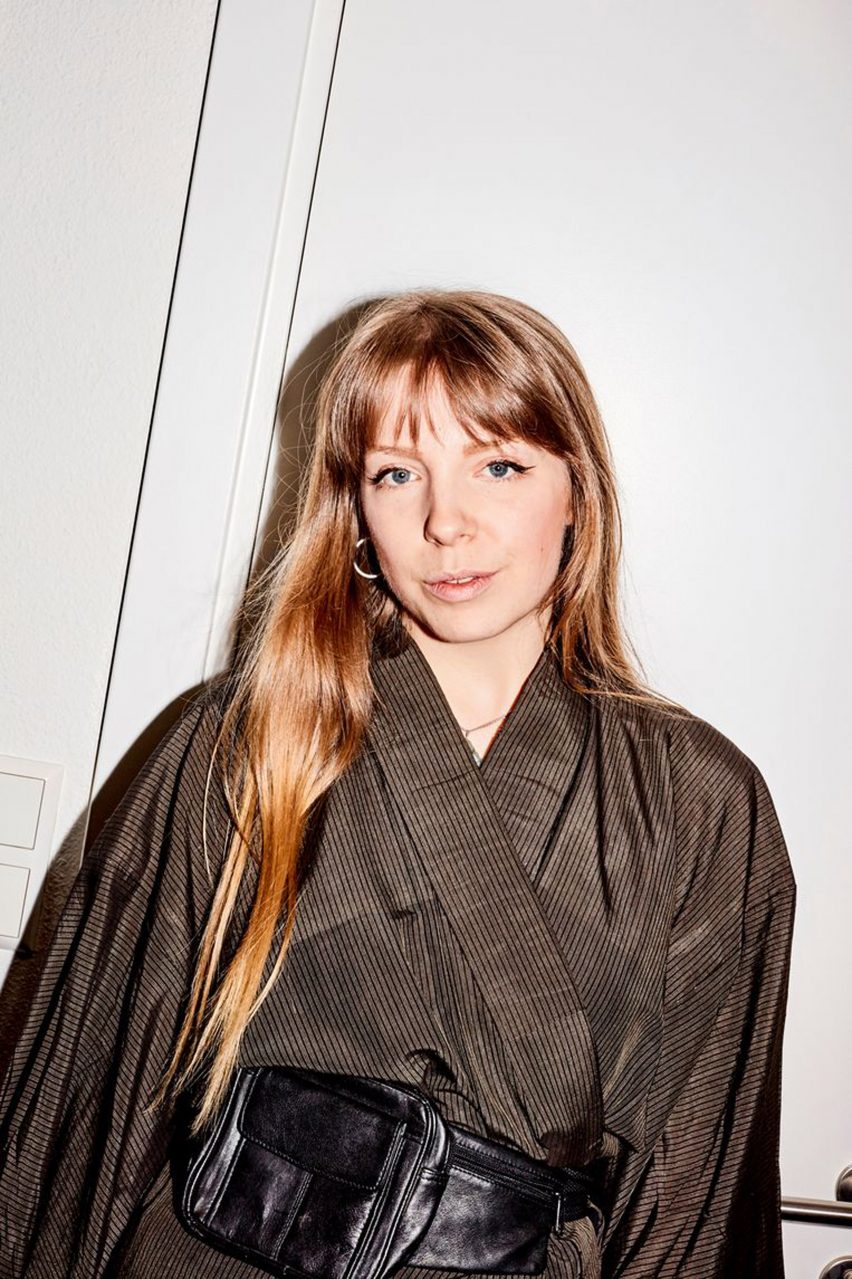
Will the extraordinary rise of NFTs continue in 2022?
NFTs experienced a meteoric rise this year but continue to divide opinion. As part of our 2021 review, Dezeen speaks to both sides of the debate to explore what the future might look like for NFTs in 2022.
Digital fashion designer Amber Slooten believes non-fungible tokens (NFTs) are allowing artists to "tak[e] back ownership over their work", with the potential to create "a new society" through the digital asset certification system.
But cryptocurrency journalist David Gerard told Dezeen the industry is already overrun with nefarious activity and will soon be "absolutely destroyed by the authorities".
NFT sales flourished in 2021 with many traditional design fairs, including Milan design week, postponed or completely cancelled due to coronavirus restrictions.
NFTs entered the mainstream in the latter half of the year
The beginning of the year saw Argentinian 3D artist Andrés Reisinger sell a virtual piece of furniture for almost $70,000 in an NFT online auction and a collage by American artist Beeple break records when it sold for a staggering $69 million (£50 million).
By April, 3D artist Alexis Christodoulou announced that NFTs were entering a new frontier.
"We're right at the beginning of the frontier," he told Dezeen. "This is an opportunity to create something beautiful because you're in charge again."

However, it was in the last six months that demand for NFTs really went mainstream. Independent designers were joined in the space by brands such as Adidas, which recently announced that its next collection will include both digital and physical items that can be sold as NFTs.
Facebook's rebrand as Meta in October 2021 brought the NFT phenomenon squarely into the public consciousness. The rebrand confirmed that the metaverse – a digital world where people can experience a parallel life to their real-world existence – was here to stay.
It therefore came as no surprise that Collins Dictionary selected "NFT" as its word of the year.
"Artists pushed the limits of NFTs during lockdowns"
NFTs are the unique identifier that records ownership of a digital asset, such as an image, using the same blockchain technology that powers cryptocurrencies like Bitcoin. Designers can create items such as clothes, artworks or even houses in the form of a video, jpeg or gif and then sell the ownership – which is distinct from copyright – as NFTs.
Crucially, the token can’t be traded for any other form of cryptocurrency, and designers are able to sell their work directly to customers on platforms such as OpenSea.
According to Slooten, co-founder of The Fabricant – which made history two years ago when it sold the first digital fashion garment – NFTs captured the zeitgeist in 2021 as life shifted firmly online in the context of continuing coronavirus lockdowns.
"Back in 2019, when we sold our first dress on a blockchain as an NFT, nobody really knew it was called an NFT," she told Dezeen. "That gives a good understanding of what the world was like before covid."
"Because of covid, we had this gigantic surge in digital – digital ownership, digital places, digital products," she reflected. "I think it's because we couldn't leave our houses, that there needed to be a different way of commerce."
London-based visualisation artist Charlotte Taylor agrees, noting that she owes part of the success of her NFT projects such as Architoys to the unique social climate of 2021.
"During the past year in lockdowns, artists have pushed the limits of what NFTs previously were, devising creative outputs, processes and afterlives of the pieces, Taylor told Dezeen.
"I believe these bold movements have increased the demand and brought a greater curiosity to NFTs in a broader spectrum and to a wider audience," she added.

Slooten is a champion of NFTs. She argues that many designers are drawn to the format for its democratizing characteristics.
"The thing that excited me most about this is that we're creating a new society [of designers]," Slooten told Dezeen. "Everything feels really new with platforms like Open Sea serving as a portal into this new world."
It's a sentiment shared by others within the industry. Monty Preston, curator of Saatchi Art's The Other Avatars, a platform of avatars designed by professional artists, highlights how the blockchain technology that underpins NFTs allows the authenticity and ownership of designs to be more traceable.
"NFTs are revolutionizing how creators are compensated for their work," Preston says.
"With the introduction of digital scarcity and ownership provided by NFTs, we can now establish authenticity and provenance, and pay royalties to artists on each sale of their works."
Criticism from investors and experts
Not everyone is as enthusiastic about the potential of NFTs to democratise the design world, however. Despite their meteoric rise, they remain the subject of criticism over the environmental impact of energy-hungry blockchains and ridicule over the fact that although an NFT cannot be replicated, the digital file it is associated with can still be freely copied and downloaded.
The nature of the NFT marketplace has also drawn criticism from wary investors and experts who say it is prone to the same concerns about money laundering and absent regulation as cryptocurrencies.
Only this week, celebrated multimedia artist Brian Eno characterised the NFT world as "hustlers looking for suckers" in an interview with The Crypto Syllabus.
"We have to be careful to distinguish between two things," said cryptocurrency journalist Gerard. "One is the fabulous hypothetical future possibilities of what you might be able to do with NFTs in some future sense. And secondly, the actual real-life NFT market we have, which is awful and reprehensible in pretty much every way."
He claims that the NFTs market is being artificially inflated by those seeking to exploit it for money laundering purposes through sham transactions. As a result, the actual potential financial benefits for designers are smaller than they might seem.
"I'm all for artists getting money... but one of the problems is they often don't. A lot of artists get into NFTs, they think this is finally their chance to get ahead and they don't realise how the whole market is largely fake," he says.
Eventually, Gerard predicts a heavy crash back down to Earth for the NFT market as governments move to introduce more regulation.
"I look forward to this market being absolutely destroyed by the authorities, however possible, then people can get on with doing cool stuff," he says.

So what next for NFTs in 2022? There's no doubt that designs are increasingly being made in a virtual setting.
Taylor, who is currently working on developments to her imaginary home Casa Atibaia, believes that next year will see NFTs help widen the appeal of the metaverse.
"The metaverse will be very prevalent in new architectural and design projects, expanding to retail and fashion fields," she says.
"Ironically I’m very much a lover of analogue technologies, so to see the interaction and relationship between the metaverse and reality will be the most curious element for me."
Slooten similarly envisions a year in which NFTs become more widespread as non-designers increasingly realise the potential of creating digital designs themselves. She cites The Fabricant Studio, the new platform set to launch next year on The Fabricant, where people can create clothes and sell them as NFTs, as an example.
"This is giving the agency of creativity back to the people," she explained. "We're really excited about enabling this new creative economy and creating a new fashion ecosystem that doesn't exploit but actually accelerates and creates more wealth for everyone."